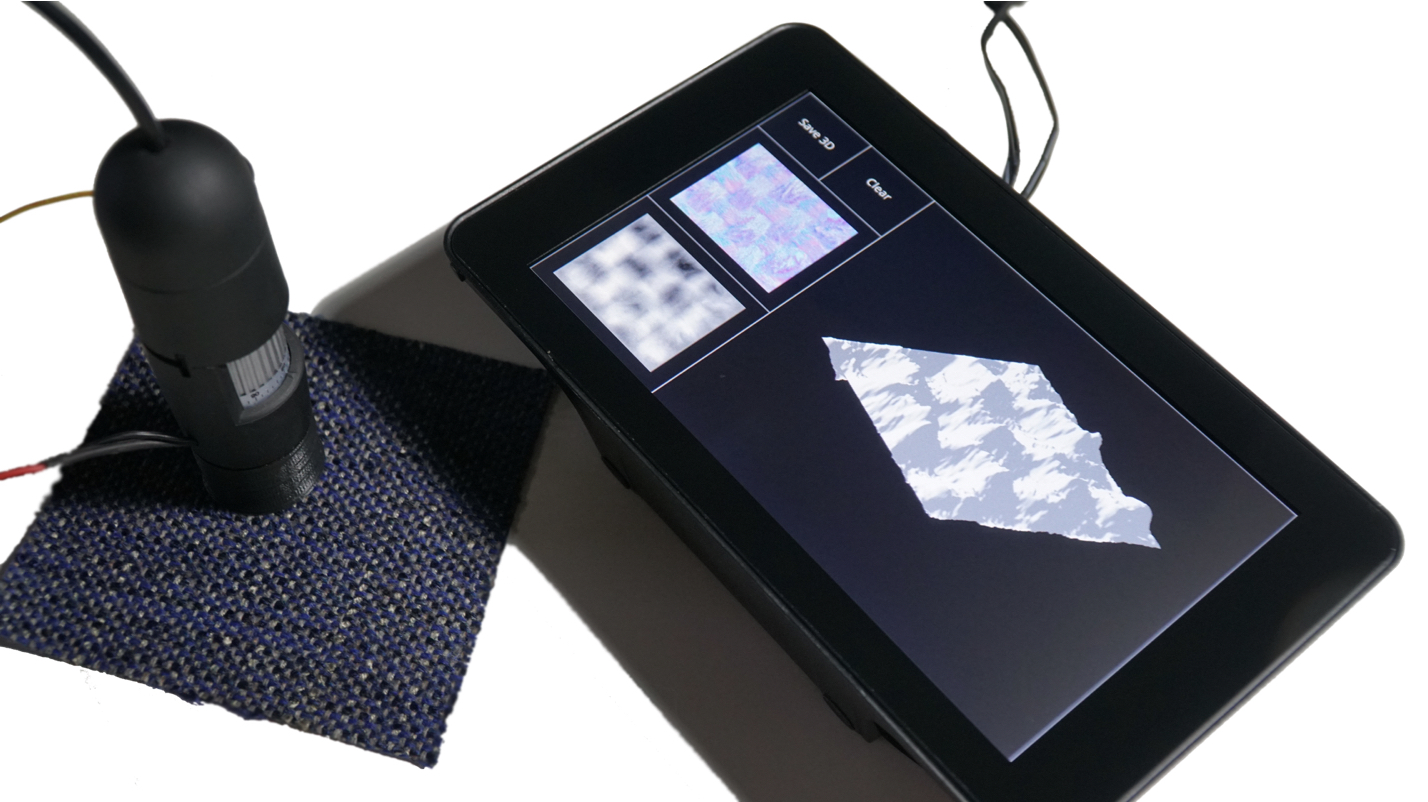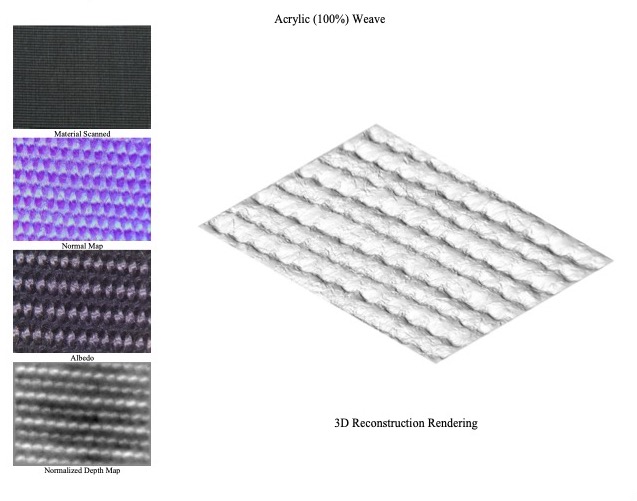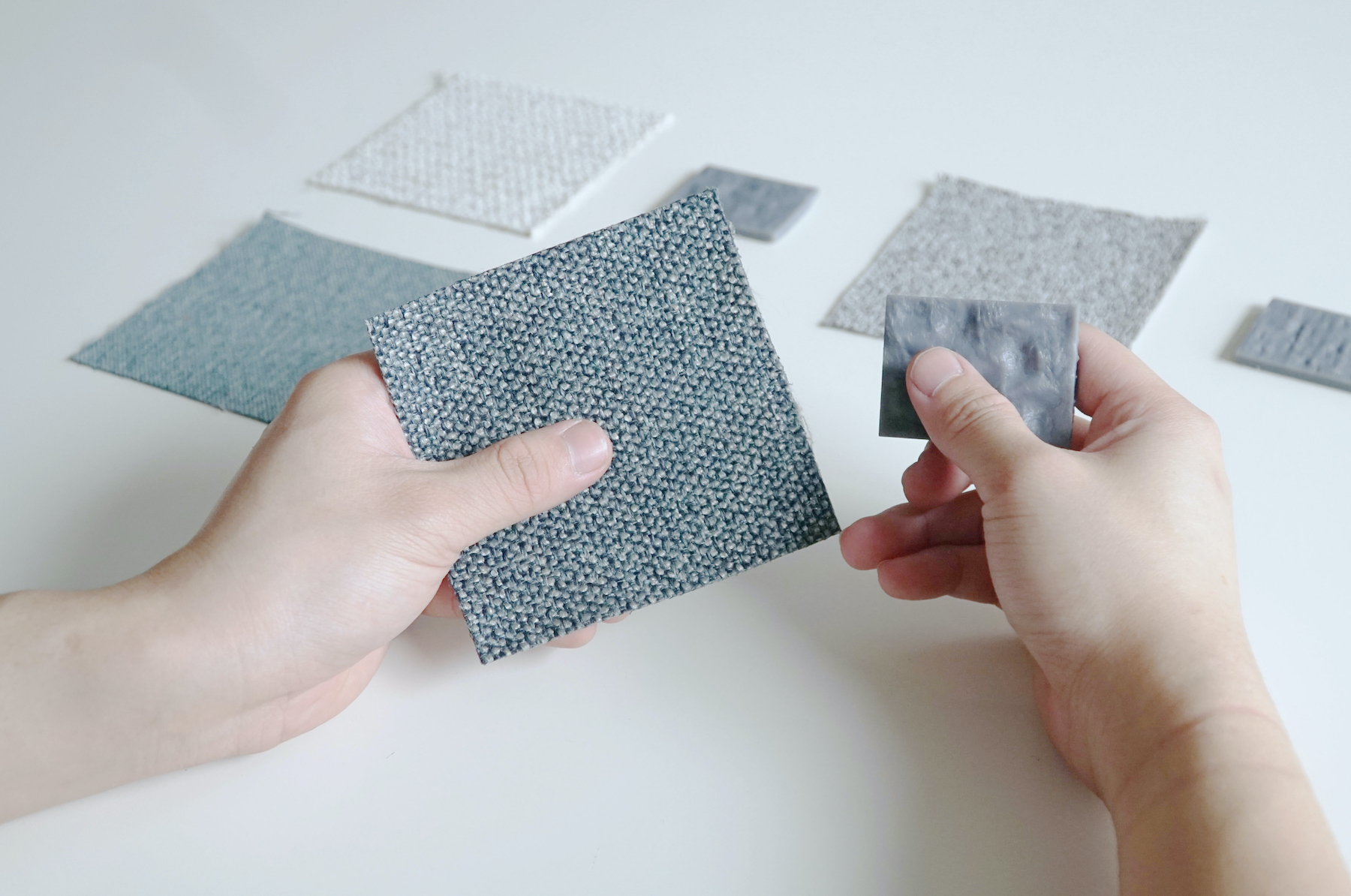Inspired by the Bauhaus material sensory training, Wei Wei Chi (MSCD'19) examine the role that texture plays in contemporary design workflows. To do this, Wei Wei prepared a prototype texture scanning device that allows near real-time sampling of physical textures at microscopic scale.
This was implemented as a low-cost, portable, open-source device. The implementation is designed to be portable and easy to use with a variety of materials. To scan, a user places the microscope over the material and selects the scanning mode in the interface. It takes approximately 10 seconds to scan and prepare a 3D mesh.
The goal for this project was to develop a low-cost (under $200), replicable texture scanning tool that operates effectively to increase access of texture scanning for designers. Initially this tool was targeted towards architects. Later, and with the tool developed, we surveyed a broader range of potential applications through expert interviews and design case studies. This is discussed in subsequent sections. In preparing the tool, we selected parts that could be easily sourced from hobbyist electronics sites. Only two custom components (a programable LED array and a 3D printed extension cap) are required to replicate the design. The user interface and modeling software was prepared in Python. The texture modeling algorithms were selected to balance reliability and performance, so as to run effectively on a Raspberry Pi.
The hardware consists of an augmented Z-Star Venus USB microscope, a 7” touch screen interface, a Raspberry Pi 3B+ that runs a custom computer vision package and user interface to manage the scanning process. This is illustrated above left. The USB microscope is the key component. It supports a 2MP (or 5MP interpolated) image, with 220x magnification and an adjustable focal length from 10mm-50mm. This is fixed after calibration. To augment the USB microscope (see below left), the standard LED array was replaced with a programmable custom circular LED array. This places a series of LEDs at 45° intervals. This is essential to capture a series of 8 images at specific degree intervals as part of the texture modeling process. The inset image center left shows the custom circular LEDs array fitted onto the USB microscope.
Next Wei Wei examined the value and opportunities created by incorporating 3D textures into design workflows. This gathered a series of case studies of scanned materials, and discuss the fidelity of the textures produced, and its rendering of materiality. This explored both typical (wood, fibers) and atypical (bioplastics, state changes) materials.
Three expert users examine these cases and reflect on potential opportunities for material inquiry enabled by this tool. Finally, Wei Wei experimented with ways this tool might augment design processes and reintroduce material sensibility training, similar to that of the Bauhaus sensory training.


